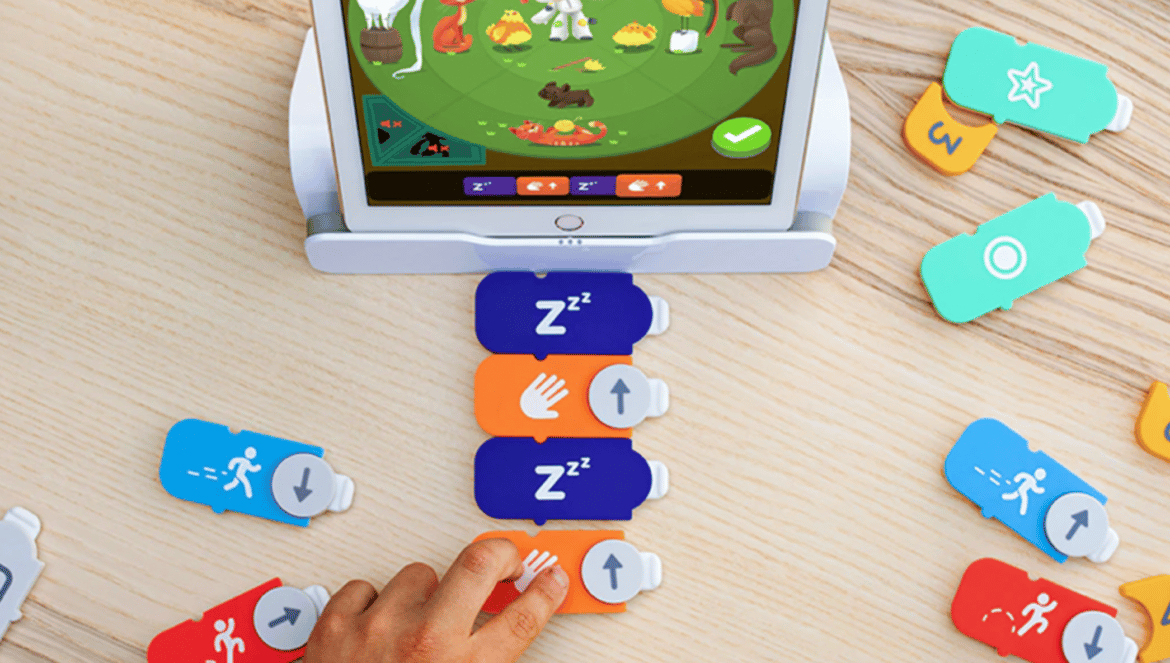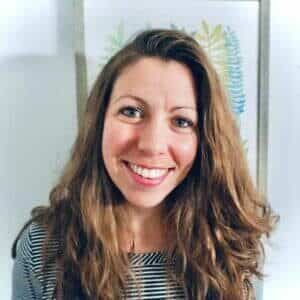Table of Contents
How did we get to Phygital Learning? The merging of physical elements of learning with digital technology.
Introduction
The word classroom often generates an image of a chalkboard on a wall and desks lined up in rows. However, this widely ingrained idea of a classroom has dramatically changed with the implementation of technology, and one educator has been ahead of the curve the whole time.
Thirteen years ago, Cary Fulgham entered her first classroom as a teacher. Instead of the traditional chalkboard, she had a Smartboard and saw technology’s powerful effect on students. Her passion for integrating technology into education was born, which set the stage for her mission to stay ahead of the education technology curve and support other educators along the way. Fulgham is now the digital learning coordinator for Lubbock Independent School District (LISD) in Lubbock, Texas.
A Passion for Helping Others
Fulgham began her undergraduate studies at Texas Tech intending to declare a math major, but while working in the healthcare field during those years, she realized what was most important to her.
“I get my joy and satisfaction when I can support others—to be somebody they can depend on, relate to, and help through whatever it is they need support with,” says Fulgham. With this revelation, she changed her degree to education so that she could become somebody that students could rely on and provide them with opportunities they may otherwise never have had.
“I was able to take over the classroom where I was a student teacher, which was awesome,” says Fulgham. “And in my first year in the classroom, I was one of the first teachers [to receive] a Smartboard, so I have never taught without one. I think I could do it, but I don’t want to.”
This confidence and competence secured Fulgham the position of campus technology lead and allowed her to pilot new tech programs and software the district was trying out.
“I enjoyed using technology in all realms, from the equipment to the software.”
This passion set the foundation for the next steps of Fulgham’s career.
A Wealth of Responsibility
After spending seven years as a classroom teacher, Fulgham moved into leadership roles as an instructional coach and, now, as the digital learning coordinator. LISD boasts 28 elementary campuses, 10 middle school campuses, five high school campuses, and some alternative campuses, totaling close to 26,000 students and 4,000 employees, so Fulgham certainly has the chance to make a difference for the masses.
Among her numerous responsibilities as digital learning coordinator, she was tasked with being the virtual school administrator during the 2020–21 school year. “I have an administration certification, so I was qualified; at our highest point, we had about 7,000 students enrolled in virtual instruction.”
It was an unprecedented and unexpected shift in the responsibilities for the position she accepted at the end of 2019. Still, her passion and knowledge of technology provided meaningful education to those virtual students.
Currently, Fulgham’s role looks more like what she had originally imagined. “I coordinate all of the training focusing on technology,” says Fulgham. “We do a bunch of summer training, which includes a conference every summer for our staff. During the school year, we train on campuses. We’ll do training during professional learning community times. We’ll do individual training.
“This year, we’re trying to support our new teachers, especially those that don’t come from the education background, that are hopping into that field and need some support. Our goal is to enhance the instruction in the classroom and provide teachers with some tools that will help them be effective in the classroom.”
Fulgham understands the importance of an open mind and trying new things, especially in the ever-changing world of education technology. Still, when asked to add another job to her plate, she was somewhat hesitant.
Taking On a New Challenge
That new responsibility? Esports coordinator for LISD.
“I don’t play video games,” says Fulgham. “I’m a doer; I like to accomplish things, so I rarely watch TV or movies. I like to check off boxes. I like things to be done.”
This organized mindset was exactly what her boss was looking for; he explained, “That’s even better because I need somebody to coordinate it. I need them to organize the tournaments and get the campuses going. I need those pieces. I don’t need somebody that knows how to play all the things.”
Fulgham’s most recent unexpected challenge opened new doors into the esports arena, and she has already learned so much about this realm of education.
“It’s incredible!” she says. “I recently met with three of our local colleges. We have Lubbock Christian University here in town, and it has a full-out esports lab. They give scholarships every year. They have national recognition for some of their teams. We also have Wayland Baptist in Plainview, TX; they have given out 30 scholarships this year. Texas Tech has built its esports lab. It’s not even all the way finished yet, but I was able to go visit.”
The possibilities that await Esports are only beginning to emerge, so Fulgham is in the perfect place to stay ahead of the curve and prepare the students of LISD for whatever opportunities their futures may hold.
“About 70 kids are planning a field trip to visit the Texas Tech lab, which will help them see that this isn’t just video gaming for fun at the high school level,” says Fulgham. “This is an opportunity to get some funding for college, and they’ve even incorporated their esports with their College of Business and some video game design pieces. It’s a big collaboration. It’s cool.”
Phygital Learning Opens New Understanding of the Power of Technology
Esports may be the newest technology realm for high school students at LISD, but it was another program for early elementary learners far ahead of the edtech game just six years ago.
“For me, Osmo provided a different outlook into technology,” Fulgham of the program she worked to integrate into LISD. “It is a technology-driven tool in our classroom, but it’s also a hands-on learning tool. [With Osmo,] our students interact with the technology, not just watching a screen or typing on a keyboard. They’re using pieces to manipulate to show understanding.”
Osmo’s ability to merge physical learning elements with digital technology has created a phygital learning environment that is changing how we view classroom setup and instruction. Through reflective artificial intelligence, the camera on iPads and Amazon Fire tablets turn into a mirror that reads a student’s physical workspace. This phygital learning is ideal for younger students still developing their fine motor skills and whose brains better process and store information with tangible tools.
“When we started with Osmo, every kindergarten teacher in our district received five bases, five sets of numbers, five sets of letters, and five sets of tangrams,” says Fulgham. “We did a few coding pieces and a few pizza pieces for the whole campus at the elementary level. Those pieces could be checked out through the library.”
“We went into Osmo quickly and big, so when we did that, we also purchased iPads to go with it. They were locked down, and the only thing installed on those iPads were the Osmo applications.”
The Osmo applications themselves are free to download. With a new teacher dashboard, students can individually log in to the gamified learning programs, allowing them to learn, grow, and progress at their own pace.
“Then the training that came with it was amazing!” says Fulgham. “We have teachers that were innovative and creative in setting up Osmo. There’s lots of station usage, which was a big push at that time in our district of wanting to do blended learning and have our kids rotate through some stations that would enhance their learning and get their minds going in different directions.”
Early Coders Emerge with Phygital Learning with Osmo
The Osmo Education system was so successful in kindergarten at LISD that it has since expanded to early childhood programs and up into 5th grade and even some middle schools.
“We see coding starting either in late elementary or early middle school. With our new technology standards, it’s also aligned,” says Fulgham.
Osmo introduces coding programs using the hands-on pieces for which their phygital platform is recognized. “They look just like the coding pieces that you’re going to see when you get into one of your website-based coding programs, which is crucial for those students to be able to connect the pieces, manipulate and turn them to make those things all work the way that they want to make their loops, make their sequences,” says Fulgham.
“Then, when they get on to a web-based program where they’re building those pieces, they can connect their learning from using the Osmo kits and being hands-on. This is especially important at the 4th, 5th, 6th, and 7th-grade levels.”
Fulgham understands the influence of technology on today’s children and aims to encourage a purposeful and meaningful use of it.
“I have a 14-year-old who wants to go build his gaming computer,” says Fulgham. “I also have a 7-year-old and a 6-year-old, and I think they see the technology happening. That’s their world. I think they were 3 years old when they figured out how to swipe and unlock a phone. From a parent’s standpoint, it’s so beneficial to have Osmo at home because I would much rather them be on numbers or on the squiggles playing and building and learning than on YouTube watching videos.”
Phygital Learning: Collaborating to Share What Is Working for Today’s Students
Fulgham’s passion for and knowledge of Osmo has enabled her to become an ambassador for the program to support and inform others of its success.
“My main objective [as an ambassador] is to support other people interested in the platform and answer questions,” says Fulgham. “I have even worked with individuals who homeschool their children, and they purchased it as part of their homeschool pieces.”
Fulgham’s epiphany in college about her desire to support others has evolved from a single classroom to an entire district and now to a nation of teachers and educators. “As an ambassador, [I want] to spread the word of how Osmo has positively influenced our district and its effectiveness in the classroom and instruction.”
Another benefit of the ambassador program is the weekly email announcements of upcoming web meetings to learn what’s new in the world of Osmo. “Those are so helpful to stay on top of things and prepare us for what’s coming up next and how we can get ready in the education realm for some new pieces, which is very exciting.”
Fulgham’s district and board continue to strive to keep ahead of the curve, using their students’ ever-changing future as a guide.
“I’m proud to be part of a district that looks forward and sees the bigger picture in that it’s not just about what we’ve always done that has always worked,” says Fulgham. “It’s about making sure that we’re really preparing kids for the future that they’re going to be in. Our kids that we started on Osmo are in middle school or high school. We started at an earlier age and sparked that interest [in technology].”
This success is meant to be shared, and Fulgham strives to do just that in her role at LISD and as an Osmo ambassador. “It’s so important that the whole education realm, especially public education, collaborates so that we can share what’s working for our kids,” says Fulgham.



